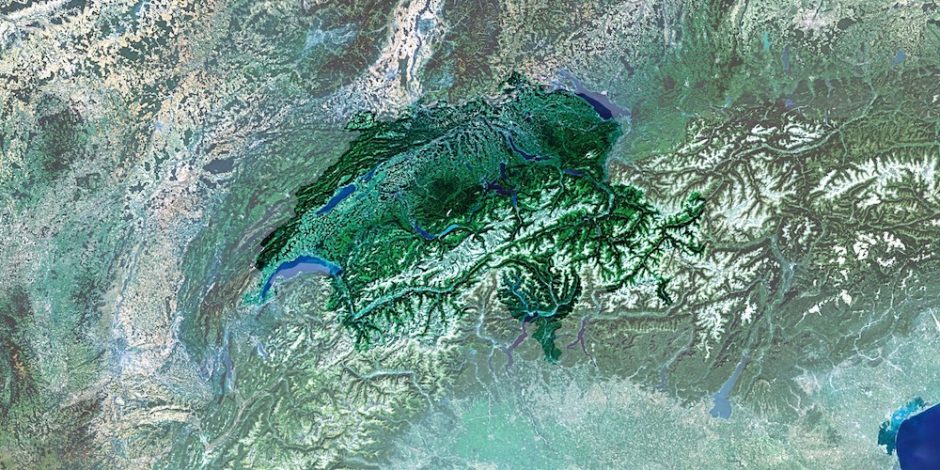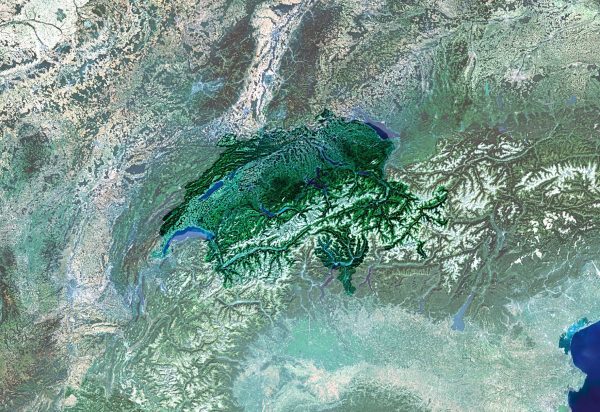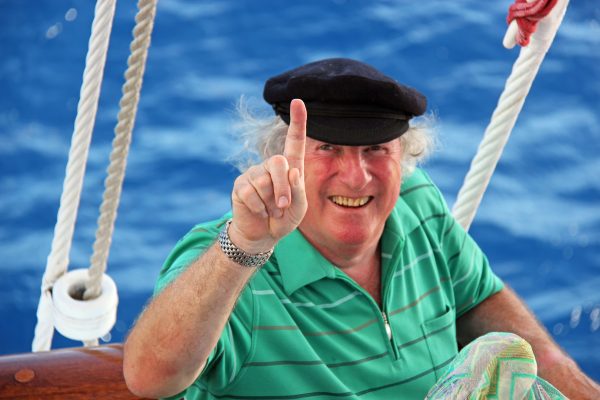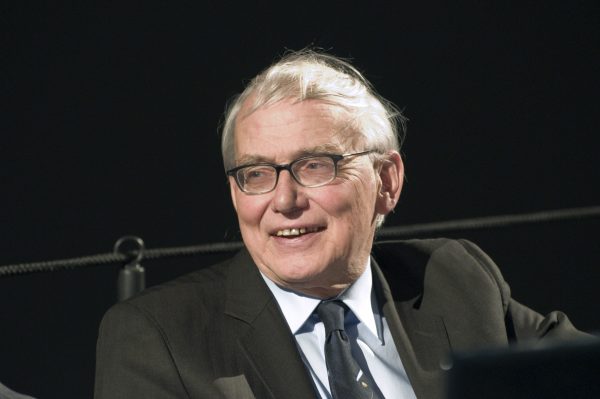Switzerland in Space

From the Bernese solar-wind experiment on Apollo 11 to space research in Switzerland as a member of the European Space Agency ESA – the development up to the first long-term space research programme ‚ÄėHorizon 2000‚Äô.
By Martin C.E. Huber
The Bernese experiment, which Buzz Aldrin planted into the solar wind after he and astronaut colleague Neil Armstrong had landed on the Moon as the first human beings, is an early highlight of Swiss space research. It received a lot of attention, especially on television. Yet it is often overlooked that the experiment has fully achieved its scientific goals: It yielded important insights for solar physics, on the formation of planets, and even for cosmology.
The then widespread Swiss skepticism about space research gradually disappeared, and today space exploration has established itself in Switzerland thanks to our membership in the European Space Agency (ESA).

Switzerland as seen by ESA’s Envisat. (Image ESA)
It all started even before Apollo 11. First experiments used balloons, then sounding rockets that had been developed by the Swiss company ‘Contraves’. But Swiss space researchers who wanted to carry out experiments in real space, i.e. outside the Earth’s atmosphere, could only do so in collaboration with the US National Space Agency NASA.
It turned out, however, that cooperation with the USA was welcome only as long as it did not affect their interests in the satellite market. And this meant that without our own European launchers there was no prospect of developing space applications. Unfortunately, Europe’s attempt to develop launchers with ELDO (European Launcher Development Organisation), founded in 1964, had to be abandoned in 1973 due to a lack of success.
This led to the formation of the European Space Agency. ESA took on the role of the European Space Research Organisation (ESRO), founded in 1964, and of ELDO. The intergovernmental agreement signed in 1975 stipulates that all member states must participate in ESA’s Scientific Programme with a contribution proportional to their gross national product. In addition, there is the option of participating in voluntary programmes in which each country can determine its own financial contribution. This opened up new opportunities for the members: if it suited their national interests, they could participate in the development of launchers or of application satellites (e.g. for Earth observation or communication) or support manned space flight.
Early on, Swiss government members, scientists and industry representatives took part in preparatory talks for European space activities. This led to Switzerland being a founding member of ESRO and ESA. Many people may not be aware that Switzerland’s influence there exceeded the size of our country, and that this continues to this day. One of the reasons for this is that we have always been able to send well-qualifiedrepresentatives from administration and science to the ESRO and ESA bodies. Our people often have considerable international experience and our understanding of democracy sometimes helps to defuse conflicts.
It is appropriate to mention here two particularly prominent representatives of Switzerland, namely:
– the recently deceased government representative Peter Creola
– and the first representative of the scientific objectives of our country, Prof. Johannes Geiss, the long-standing director of the Institute of Physics at the University of Bern.

Peter Creola (1940-2019), a lawyer with a deep understanding of technology, government representative for Switzerland at ESRO and ESA. A person who in every respect contradicted the usual caricature of a ‘federal official’. (Image zVg)
As a participant at the Intelsat Conference (1969-1971), the lawyer Creola had experienced early in his career how the United States of America tried to exploit its technical superiority to guarantee its country a clear path to space applications. As head of the Swiss ESA delegation, he therefore later advocated the development of the Ariane rockets with his intelligence, passion and correspondingly great success. The name ‘Ariane’, which is now used all over the world, can be traced back to one of his initiatives as well.

Johannes Geiss (*1926), long-time director of the Institute of Physics at the University of Bern. As a Swiss representative, he made a major contribution to the structure and content of ESA’s Science Programme. (Image Guido Schwarz)
Johannes Geiss, the successor of the brilliant Friedrich Georg Houtermans, had helped the Bern Institute of Physics to achieve an even higher reputation with the solar wind experiment and other important space studies and experiments. Early on, he was asked to join prominent committees of ESRO and ESA, and was thus able to contribute to many fundamental decisions on the structure and scientific objectives of these organisations. It should also be mentioned that the Institute in Bern was for a long time the only Swiss institute that built space experiments. It took part in space missions such as the GEOS magnetospheric satellites, the encounter of ESA’s Giotto spacecraft with comet Halley or the flyover of the solar poles with the Ulysses mission.
More recently, a number of younger Swiss scientists from Basel, Bern and ETH have taken on the role of Geiss as reliable representatives of scientific concerns at ESA. When the long-term Science Programme ‘Horizon 2000’ was planned, however, Geiss once again exerted his influence in order to maintain the tradition of a comparable effort for astronomy and exploration of the solar system. This enabled Switzerland to participate in the three missions SOHO, Cluster and Rosetta. Finally, thanks again to Peter Creola’s negotiating power, for the financing of Horizon 2000, it was possible to achieve in January 1985 an annual 5% increase in the budget of ESA‚Äôs Science Programme, which lasted for a decade.
Author:¬†Martin C.E. Huber headed ESA’s Space Science Department from mid-1987 until mid-2000 and was Titularprofessor of ETH Zurich until he retired in 2001.
Obituary in honourof Peter Creola: http://www.esa.int/About_Us/Welcome_to_ESA/ESA_history/Peter_Creola_1940-2019
Laudation on Johannes Geiss 90thbirthday, September 2016:
https://www.mps.mpg.de/4641106/geiss-geburtstag-04-sept-2016
Categories: External Newsletter, Uncategorized

